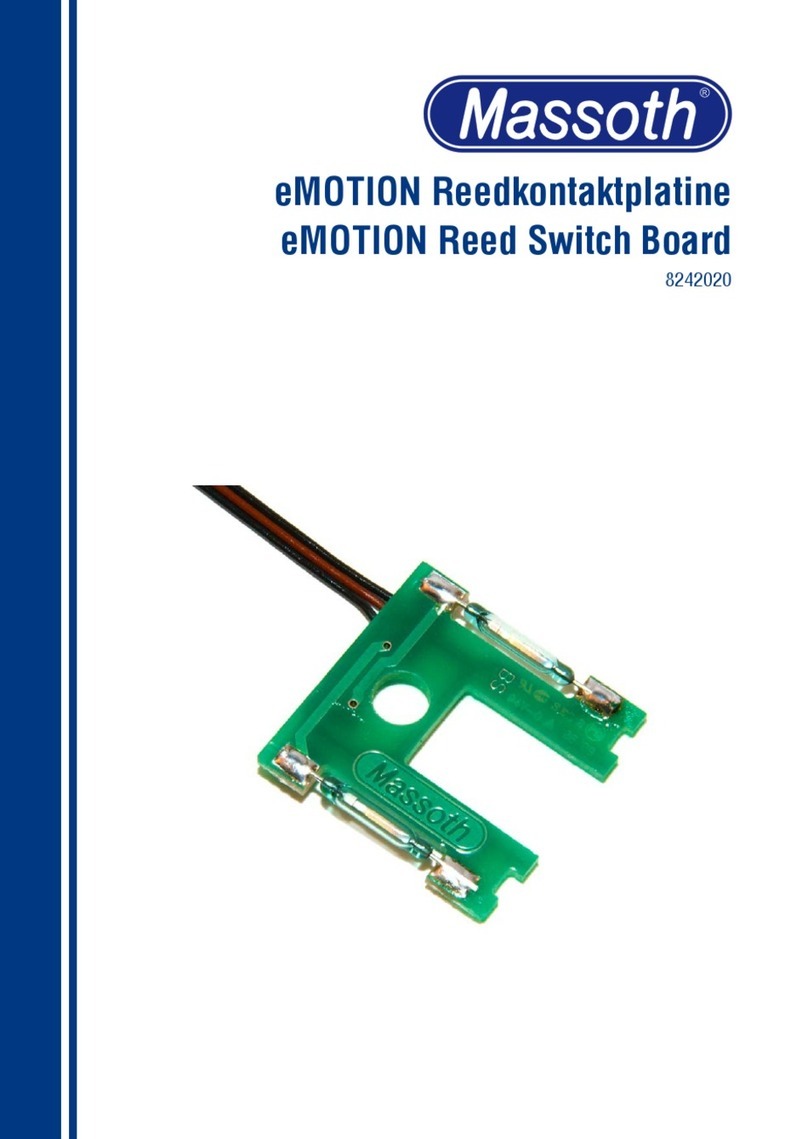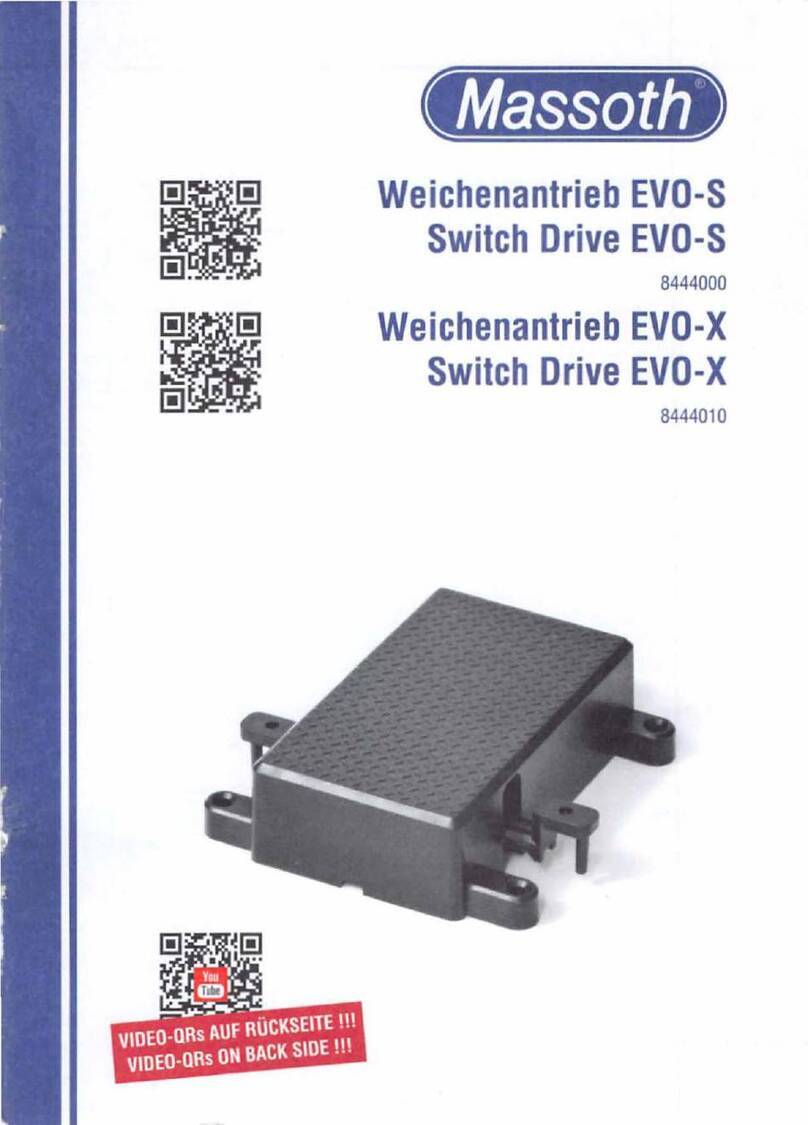
10
eine Wertigkeit. Soll nun eine solche CV
programmiert werden, müssen alle Wer-
tigkeiten addiert werden. Eine deaktivier-
te Funktion hat immer die Wertigkeit 0,
eine aktive Funktion den in der Tabelle
angegebenen Wert. Addieren Sie alle
aktiven Wertigkeiten und programmie-
ren das Ergebnis in die CV.
Als Beispiel nehmen wir hier das
NMRAKongurationsregister(CV29).
Sie möchten hier normale Fahrtrich-
tung, 28 Fahrstufen, lange Lokadresse.
Das entspricht laut Tabelle Anhang 1:
Wert 2+32=34. Also müssen Sie in
CV 29 den Wert 34 programmieren.
4.3. Weichen- oder Lokadresse
•Ein kombinieren von Weichen- und
Lokadresse ist nicht möglich.
•Jedes Gerät benötigt im Digitalsys-
tem eine Adresse mit der das Gerät
gesteuert wird. Im NMRA-DCC System
gibt es 3 Arten von Adressen:
Weichenadressen (1..2048) sowie
kurze (1..127) und lange Lokadressen
(128..10239). Diese Adresse muss im
Dekoder programmiert werden.
•Die Weichenadressen stehen in
CV 31 - 32.
Zur Nutzung der Weichenadressen
muss CV 29 - Bit 7 = „An“ sein.
Bis Weichenadresse 255 wird der
Wert direkt in den kurzen Wert einge-
geben, also CV 32.
Die CV 31 muss dann 0 sein!
requires all values to be summed up.
A deactivated function always has the
value ‘0’, an activated function the value
given in the CV-table. Add up all values
of the activated functions and write the
sum in the CV.
Let‘staketheNMRAConguration
Register (CV 29) as an example:
You intend to program normal driv-
ing direction, 28 speed steps, and
high loco address. According to the
CV-table Attachment 1 this comes up
to: 2+32=34. This means you have to
program ‚34‘ in CV 29.
4.3. Switch-or Loco Address
•A combination of switch- and loco
addresses is not possible.
•Each component connected to a digital
control system requires an address.
In the NMRA-DCC System there are
three kinds of addresses: switch ad-
dresses (1..2048), low loco addresses
(1..127) and high loco addresses
(128..10239). A decoder must be
programmed with an address.
•The switch addresses are in
CV 31 - 32.
To enable the use of the switch ad-
dresses CV 29 - Bit 7 must be ‘ON’.
Up to switch address 255 the value is
programmed directly („low“) to CV 32.
The CV 31 must be 0 !
All addresses over 255 are calculated





























